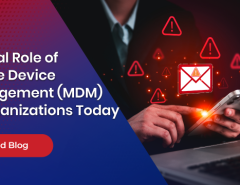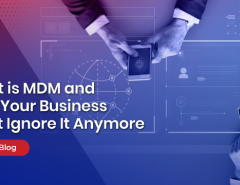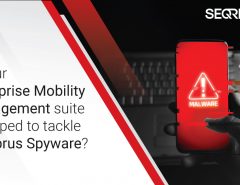A stark contrast to yesteryears with strict office hours, today’s business trends are permitting employees flexibility when it comes to office hours, remote working and devices through which they can work from.
It is in this context, many leading enterprises all over the world have adapted to a Bring Your Own Device (BYOD) policy – employees can use their own devices (phones, tablets, laptops, etc.) to connect to enterprise networks and work on their deliverables.
And, employees love BYOD because –
- Own device familiarity
- Increased productivity
- Ability to work in a preferred location
From an employer perspective, the cost of procuring new devices for each employee is saved which leads to higher cost savings for an enterprise.
The flipside to this otherwise brilliant arrangement is the security lapse that may occur if BYOD policy is not formulated properly. A weak BYOD policy significantly opens enterprise networks to cybersecurity challenges considering traditional enterprise security norms on devices do not apply anymore. This can snowball into a disaster!
Mentioned below are some of the common risks if enterprise mobility is jeopardized.
- The Risk of Data Loss
The risk of data loss rises exponentially when it comes to employees using their own devices to access and work in the business networks. Enterprises, typically are not able to deploy the same level of data controls on personal devices as they can on enterprise devices. This leaves personal devices susceptible to data loss through malware, ransomware and various other threats.
- Insecure usage
Personal devices are prone to be used in plenty of insecure ways if unsolicited users gain access to them- something which is difficult to do for enterprise devices in a conventional business security ecosystem. Personal devices connecting to potentially risky public Wi-Fi networks (airports, public restaurants, etc.) or shared within other people can cause huge risks to business-critical data.
- Personal & professional data on the same devices
An increasingly grey area in the context of BYOD, since personal devices contain both personal and professional data and are used for both professional and personal purposes, important business details are threatened. Humans commit mistakes – for instance, sending professional information accidentally to unwanted users.
- Increased risk of sabotage
All enterprises face the risk of sabotage by disgruntled employees – it is a serious risk with enterprises addressing it through various means. For companies permitting BYOD, the risk of sabotage through angry or dissatisfied employees is high. A former employee may still have access to company data on his/her device – leaking it to competitors or any other sources could create havoc for the company.
- Lost devices
Mobile devices facilitated by businesses operating in the business network can be safeguarded from a plethora of threats by applying policies such as frequent backups, encryption, etc. However, the same may always not be true for personal devices which make it a big risk in cases when employees report a theft of personal devices.
- Unrestricted access
All enterprises have content policies which regulate the kind of content their employees can access. While this can still be easier to regulate and moderate on work devices, it may not be possible on personal devices allowing employees to access and view all kinds of content. This opens up wider enterprise threats in the form of malware, ransomware, etc. which is notoriously hidden in unrestricted content.
The key to managing BYOD is deploying an Enterprise Mobility Management solution which understands and addresses the aforementioned risks. Enterprises can consider Seqrite mSuite which increases the productivity of enterprises by mobilizing the workforce while ensuring that critical data remains absolutely secure.




